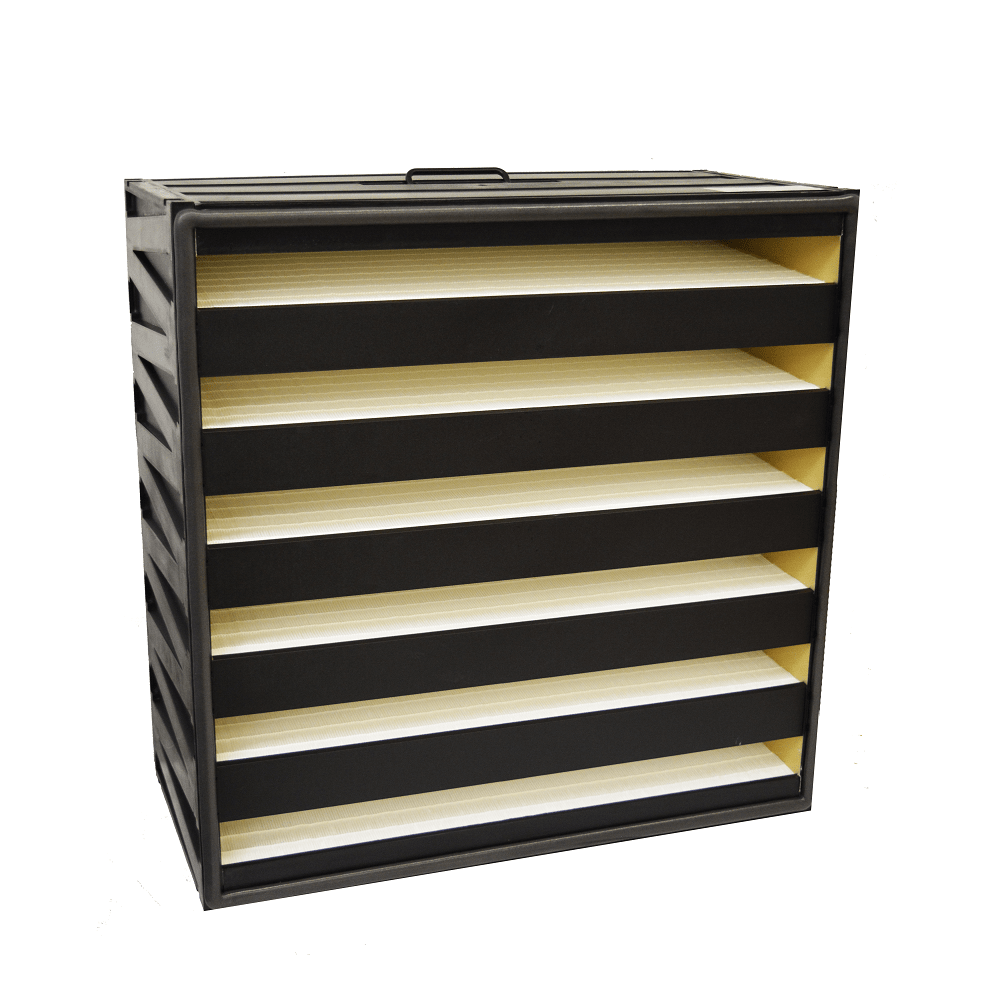Top 3 Ways to Improve Air Quality in Your Home or Workplace
Infections are the leading cause of death in long-term care facilities, accounting for 380,000 deaths annually, including influenza, pneumonia and others. Unfortunately, SARS-CoV-2, the virus responsible for COVID-19, will only worsen this statistic. Germ-carrying droplets or aerosol particles and poor indoor air quality (IAQ) have taken center stage in today’s fight against COVID-19 in healthcare facilities, and it’s estimated that as high as 43% of all COVID-19 deaths have been in long-term care facilities. It’s crucial to consider modifications to airflow as well as clinically effective solutions that may prevent airborne transmission in senior living communities. Let’s evaluate three different HVAC infection prevention indoor air quality solutions to help fight COVID-19:
3. Ventilation & HEPA Filtration
According to ASHRAE: “Ventilation and filtration provided by heating, ventilating, and air-conditioning systems can reduce the airborne concentration of SARS-CoV-2 and thus the risk of transmission through the air.”
Filtration traps particles and pathogens from outside or recirculated/conditioned air in a filter as they pass through an HVAC system. This is available on most air handlers and as a thin filter for dust on PTACs. There are two common filtration techniques.
Minimum Efficiency Reporting Values (MERV) ratings are a measure of a filter’s ability to capture particles 0.3 to 1.0 microns. MERV values are not standard and will vary from one brand to the next, so it’s important to check brand, system and compatibility.
High Efficiency Particulate Air (HEPA) filters are a type of mechanical air filter and can theoretically remove at least 99.99% of dust, pollen, mold, bacteria, and any airborne particles with a size of 0.3 microns that pass through them. The diameter specification of 0.3 microns responds to the most penetrating particle size (MPPS). Generally, your HVAC system needs to be compatible with a HEPA filter or it may not work as effectively. More system power would then be required, resulting in increased energy bills and extra strain and maintenance on your system. ISO-Aire™ filtration systems are compatible with HEPA filters, giving you an extra layer of security.
2. UVC Light Irradiation
Ultraviolet-C (UVC) light has long been proven to have disinfection properties. UVC light emits a specific band of UV light (radiation) that can break down the DNA/RNA of germs, and is available in many applications to treat water, surfaces and indoor air. It can be installed in several ways. UVC light is an option that can be built into ISO-Aire units.
1. Ozone-free Bipolar Ionization
Installed into new or existing HVAC systems, ozone-free bipolar ionization uses an electronic charge to create a plasma field filled with a high concentration of positive and negative ions. As these ions travel with the air stream and flood facility spaces, they attach to particles, germs and gas molecules to: inactivate germs, agglomerate fine sub-micron particles that can be filtered or fall out of the air, and break down harmful and/or unpleasant VOCs (odors).
The proactive nature of bipolar ionization technology, flooding both positively and negatively charged ions into the rooms where residents congregate, gives it added efficacy against hard-to-find-and-kill germs by not limiting treatment to only air that passes through the HVAC system. Combining with filtration to remove passing dead germs makes for an even more effective solution. This technology differs greatly from simple negative ionization, which affect particles only, can create ozone, and typically has lower effectiveness because of very low airflow rates and clean air delivery rates. Ozone-free bipolar ionization is an option that can be built into ISO-Aire™ units.
ISO-Aire™ Combines These 3 Technologies into One
With different virus-fighting properties, we have taken the step to combine all 3 technologies to offer the best protection against airborne contaminants that extend beyond just viruses- bacteria, mold spores, VOCs (volatile organic compounds), and allergens like pollen. With guidelines from CDC, OSHA, and WHO, as well as recommendations from ASHRAE there are significant steps that can be taken to help reduce the risk when opening a business back up. Of these, improving indoor air quality is a big step in the right direction. The three big proven technologies used in cleaning air include the use of HEPA filter, UVC light, and ozone-free bipolar ionization.


